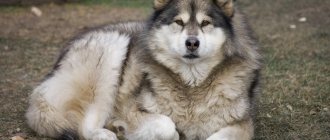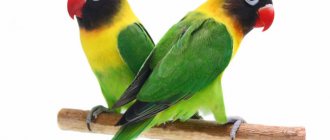A guide dog is a window to the world for an owner who is unable to move independently in space due to very poor vision or its complete absence. The main job of such a pet is to guide its owner, help him overcome physical obstacles, and accompany him everywhere. Hypothetically, any dog can be taught this skill, but certain breeds are best suited for this work. Most often, large dogs become guide dogs because of their physical strength and extraordinary abilities.
To become a guide for people with visual impairments, a “flea-faced” must undergo long-term training, appropriate education and training. It is important that a guide dog suits its owner according to many criteria, including activity level, lifestyle and living conditions, hobbies, and the person’s marital status. Taking into account all these features, an assistant is selected. When a pet is found, long joint training is carried out so that the person and dog get used to interacting with each other. These problems are usually solved by non-profit organizations that act as an intermediary to help people and dogs find each other.
Let's take a closer look at the breeds that are best suited for the role of a guide dog.
Golden retriever
This breed is known as one of the best pets for the average family. In addition, they are distinguished by their ability to control the situation, and therefore are highly valued as guides. Like Labradors, these animals are good workers, but unlike the latter, they are much more energetic and active. One way or another, having received proper training, even such active pets are always ready to enjoy a quiet home environment in the company of their beloved owner.
If a retriever, friendly, affectionate and open-minded by nature, is trained properly, it will obey all rules and serve its owner faithfully.
The advantages of “goldie” are:
- gentle disposition and strong desire to please;
- intelligence and obedience;
- calm disposition with lower exercise needs than some other guide dogs;
- friendly communication with other pets and people (with proper upbringing).
Disadvantages include dense wool with a good undercoat, which requires special care.
Doberman
These active guide dogs require daily long walks and games to maintain good physical shape and health, so they are more suitable for children and young people with visual impairments. It is difficult to imagine the Doberman as a companion and companion, but they have proven themselves well due to their desire for training and balanced character. A calm and friendly dog quickly takes a defensive position if its owner is in danger. They are sociable, but will not bother their owner if they are in a bad mood. They adapt and go through all the difficult moments together, so they become not just a dog leading through the roads and streets, but a real loyal friend. The height of an adult is 65-75 cm.
Goldador
The two most popular breeds most commonly used as guide dogs are the Golden Retriever and the Labrador Retriever. Recently, they are increasingly being crossed to produce a hybrid that combines the best qualities of both breeds to help visually impaired people.
The positive aspects of the hybrid include:
- ideal temperament – balanced, focused, not too energetic;
- stress resistance;
- sociability (the dog is not distracted by other pets and people while working);
- lower grooming needs than pure goldies;
- not as high a need for exercise as pure Labradors;
- excellent health and longevity.
Saint Bernard
These large dogs (up to 70 cm at the withers) have the same big and kind hearts, prudence and rescue skills. A kind of hero of our time. Behind the thick fur and deep brown eyes lies excellent self-control and a willingness to always come to the aid of its owner. However, not everyone can find an approach to a St. Bernard - a dog will be able to fully open up and love a person if it becomes a real member of the family. Thus, a person acquires not just a guide, but a true, faithful friend.
German Shepherd
The German Shepherd became the very first breed to serve as a “guide” for visually impaired people. The Germans, who successfully used these dogs in military service, decided to train the animals so that they could help their fellow citizens - veterans of the First World War.
It took nearly a decade for the use of German Shepherds as guide dogs to spread throughout Europe and the United States. In 1929, the Seeing Eye Special School was opened in Nashville, Tennessee, in the United States, which to this day trains and trains dogs to help people with vision problems.
The German Shepherd is a model of loyalty and adaptability. They have high intelligence and good intuition, and are famous for their impeccable performance, responsibility and diligence, which makes them excellent guides. But before starting work, the shepherd must perform many exercises under the supervision of an experienced trainer.
As an assistant, such a dog is recommended for an active owner, because representatives of the breed are very energetic and need constant physical activity.
“Germans” are extremely loyal comrades, but they do not immediately get used to people.
Having remained indispensable for a long time in the role of a guide dog, the German Shepherd still has not lost its relevance for such work, but its popularity in this area has somewhat diminished. The fact is that other breeds, in particular Labrador and Golden Retriever, have now become more in demand as service dogs.
Among the advantages of the German Shepherd it is worth pointing out:
- diligence aimed at performing work efficiently and accurately;
- an instantly recognizable breed of service dog;
- respectful attitude towards the breed, firmly rooted in the public consciousness;
- very high intelligence and the ability to solve complex problems even in stressful situations.
Negative points:
- need for great physical activity;
- thick and rather long hair, which is subject to heavy shedding;
- possible aggressive behavior towards other dogs and people (in the absence of proper socialization);
- specific health problems, including hip dysplasia;
- shorter lifespan compared to other breeds.
The cost of the animal and the right to receive
Guide dogs are provided free of charge to everyone with group I visual impairment. But you will have to wait your turn, which usually takes about 6 months. For those who don't want to wait, you can buy an animal.
The price for a guide dog ranges from 250-400 thousand rubles. The second option is to purchase the animal yourself and send it to training. The cost of training is approximately 60 thousand rubles.
Poodle
Poodles are not only the smartest, but also one of the most flexible, easy to train and incredibly obsequious breeds. They perform their work with pride, feeling the importance of the task and the great responsibility entrusted to them.
The problem here is not the dog, but the environment. Poodles look approachable and attract the attention of passers-by, to whom they seem like an ordinary house dog. And considering that the pet looks very cute and beautiful, it is almost impossible to restrain yourself from petting him.
This can greatly distract the guide from work, so it is important to train the pet not to react to stimuli and not to come into contact with the environment unless necessary or directed by the owner. The dog must understand when it is on duty and when it is not.
Among the advantages of a poodle are:
- hypoallergenic (the breed is suitable for people who are allergic to dog hair);
- quick learner and eager to please;
- loyalty;
- good health and long life expectancy.
Among the shortcomings are the following:
- high need for physical activity;
- the desire to be the center of attention and the need for mental stimulation;
- Poodles are not always recognized by the public as working dogs;
- difficult grooming.
Bernese Mountain Dog
These are hardy, active, peace-loving and cheerful dogs that are ready to give their blind owner a boost of energy and happiness. However, once on the street in a specialized harness, the funny pet will be unrecognizable. He instantly transforms into an obedient, balanced and reasonable dog, clearly in control of his surroundings. It is quite easy to train, but you have to be persistent.
Border Collie
Representatives of this breed are not so often found as guide dogs. Herding work is the true calling of the Border Collie. And there is no doubt that these dogs are incredibly smart and hardworking. They are extremely alert, fast and enthusiastic. “Shepherds” strive to please their master, and are also able to make independent decisions, coping with very complex tasks.
It is for these reasons that the Border Collie is ideal for the role of a guide dog, but it will feel best in the company of an active owner who, like his charge, does not like to sit in one place for a long time.
In addition to herding and the role of a guide dog, the Border Collie also successfully copes with other tasks, for example, within the framework of search and rescue and therapy work.
So, the advantages of the breed include:
- speed of learning;
- the ability to concentrate on work even in an unstable or stressful environment;
- unsurpassed intelligence;
- excellent relationships with other pets and people;
- good health and long life expectancy.
Among the disadvantages of the breed:
- excessive energy;
- need constant mental stimulation;
- difficult grooming.
The miniature Australian Shepherd has the same characteristics , which is also often used as a guide dog.
Methods of preparation for work
The main task of guides is to study and remember routes so that the owner can easily get to the desired point, be it a store or work. In order for the dog to cope with its duties, it is taught the following commands:
- moving in front of the owner, turning;
- stopping when obstacles appear and further walking around (in this case, the dog must notify the owner about the obstacle).
Command training is carried out at training grounds with the help of professional dog handlers. A man holds a cane for the blind in his hands and moves along a trajectory. When an obstacle appears, the command “Stop” is given and the trainer hits the obstacle with a stick. Training is carried out until the animal begins to respond correctly to commands. When the dog learns to cope with these tasks, they move on to the next stage - moving between objects, going up and down stairs, driving along the streets. Students are taught basic commands and the names of various places: house, store, park.
Boxer
The Boxer will always be close to the owner if he needs help and support. These dogs are not only adorable, but also loyal, patient, and incredibly hardworking. Once they establish a strong bond with their owner, there is little in the world that can destroy it.
For a Boxer to be well trained, training must be consistent, and the owner must show confidence, determination and firmness in the process of working with the pet. This is due to the fact that the dog sometimes behaves too stubbornly and too playfully. In any case, after undergoing quality training, the pet can become an ideal guide dog for its owner.
The Boxer, an athletic, energetic, highly active breed, was bred for several purposes, including guarding, companionship and work. These dogs are very patient with children and show amazing devotion to their owners.
A guide dog is an assistant and a faithful friend
Guide dogs are specially trained to help blind people move around on the street. They are not only irreplaceable companions that help you avoid obstacles on the road, but also life guides that open up new opportunities and awaken interest in the world around you.
The history of guide dogs goes back hundreds of years. Animal training schools began to appear in the 20-30s of the last century in the USA, Great Britain, and Germany for blind war veterans. Many people with vision problems do not dare to have four-legged companions due to the lack of necessary information and various myths about them.
Chasapeake Bay Retriever (Chasapeake Bay Retriever, Chesapeake)
Smart, easy to train, faithful companions and reliable guides. These dogs can bring great benefits to the owner, but only if they are well educated and properly trained.
This breed is accustomed to work, so it always feels the need for it, like a true workaholic. An affectionate disposition, a desire to patronize and care for the owner are an excellent basis for creating an exemplary guide dog.
Training dogs of this breed is somewhat more difficult than representatives of previous breeds. That is why the Chespeake is not so common as a guide dog. At a young age, they show a fair amount of stubbornness and self-will, which requires strict, consistent education. After training, the animal becomes an excellent companion and assistant for its owner.
What a guide dog can do
A trained guide dog copes with the following main tasks:
- be focused and suppress instincts;
- overcome obstacles on the road (puddles, stones, curbs, steps) and give signs about them to the owner;
- accompany a blind person through the streets and intersections;
- guide a person in movement on climbs, stairs, turns, through narrow passages;
- master familiar routes, on average up to 35-40, from your place of residence and back.
A true guide is not afraid of people and vehicles, and is attentive to the actions and well-being of the owner, provided that he behaves competently. Buying a guide dog is the first step, and the second is the ability to give commands and maintain the skills the dog has learned. After the transfer of the pupils, dog handlers continue to advise the owners for some time.
The main task of the dog is to reduce the dependence of blind people on strangers and to provide psychological support to a person with disabilities.
They do not have protective instincts, since guide dogs do not show aggression towards strangers. Devotion and loyalty to the owner are their integral qualities. The price of a guide dog is never low, but for the blind these helpers are priceless.
Hungarian Vizsla (Hungarian pointing dog)
With a toned, athletic build, the energetic Vizsla has a reputation as an excellent hunting dog and loyal companion.
Despite his kind, easy-going disposition, this dog is always ready to defend his person. Another advantage of this breed is its ease of training. The dog's intelligence and obedience make it a pleasure to train.
The Vizsla is a very active and hardworking breed that requires a lot of physical activity.
Features of training
Training begins with choosing the right puppy.
Not all dogs are able to undergo training and be adopted into a family. Candidates are selected as early as 2 months of life. At this stage, their life skills, endurance, goodwill, and patience are tested.
Traditional training of guides is divided into 2 stages:
- general (audition course);
- special (driving).
The audition course begins after the selection of puppies. It consists of candidates living in the families of volunteers. At this stage, regular meetings with dog handlers are held.
The task of the family is to socialize the dog, to develop immunity to external factors and loud sounds. Dogs with unsuitable characteristics are rejected.
During guide training, no violent punishment is used. It can instill aggression in a candidate.
General training lasts during the first year of the dog's life. Then special training begins.
Special training is carried out on the basis of dog handlers with trips to the city. This allows the guide to get comfortable in a real environment.
At this stage, the animals become familiar with the routes of movement of the future owner. They learn to deal with natural stimuli and obstacles. The duration of special training is six months.
General training lasts during the first year of the dog's life
Depending on the wishes of the owner, training can be supplemented with individual elements.
The special course ends with an exam. It goes before the commission. The main goal is to convince the examiners that the dog is ready to become the eyes of a blind person.
The exam takes place in two stages:
- checking the general course;
- passing the route.
The examiner and the commission check:
- movement at the same pace as the owner;
- movement on inclined planes, stairs ;
- passing between oncoming objects ;
- stopping in front of obstacles or danger ;
- passing specified routes .
A trained guide knows up to 40 routes and moves harmoniously in tandem. The completion of the exam is a certificate giving the dog the right to perform guide functions and be in public places.
Labrador
If you describe the character of a dog in one word, then “friend” refers specifically to this breed. The Labrador is very prudent, calm, and easy to train. The average height of the dog reaches 56 cm, which facilitates comfortable movement on the street.
According to statistics, 80% of people with visual impairments choose this breed as a guide. For small children, such a dog can replace a nanny. The Labrador responsibly fulfills the tasks assigned to it. The lifespan of a dog is from 12 to 18 years.











